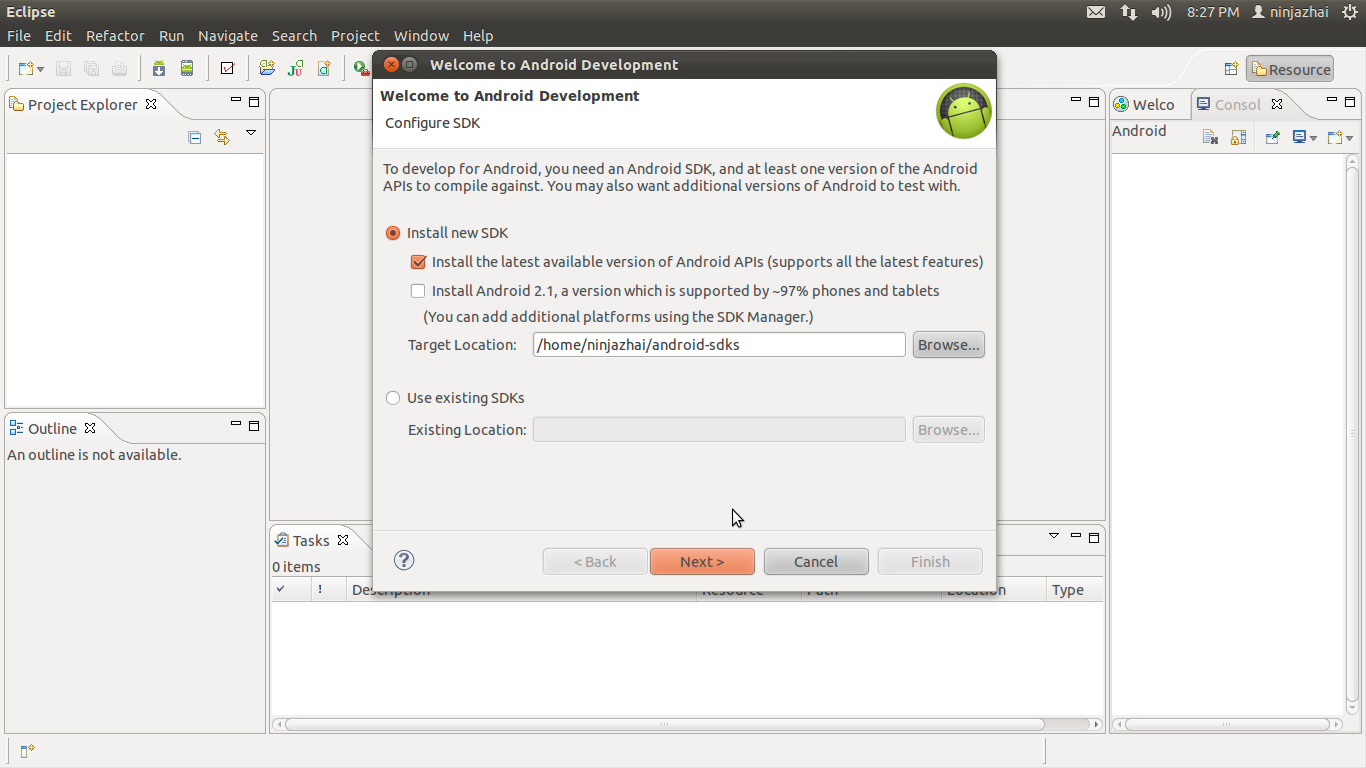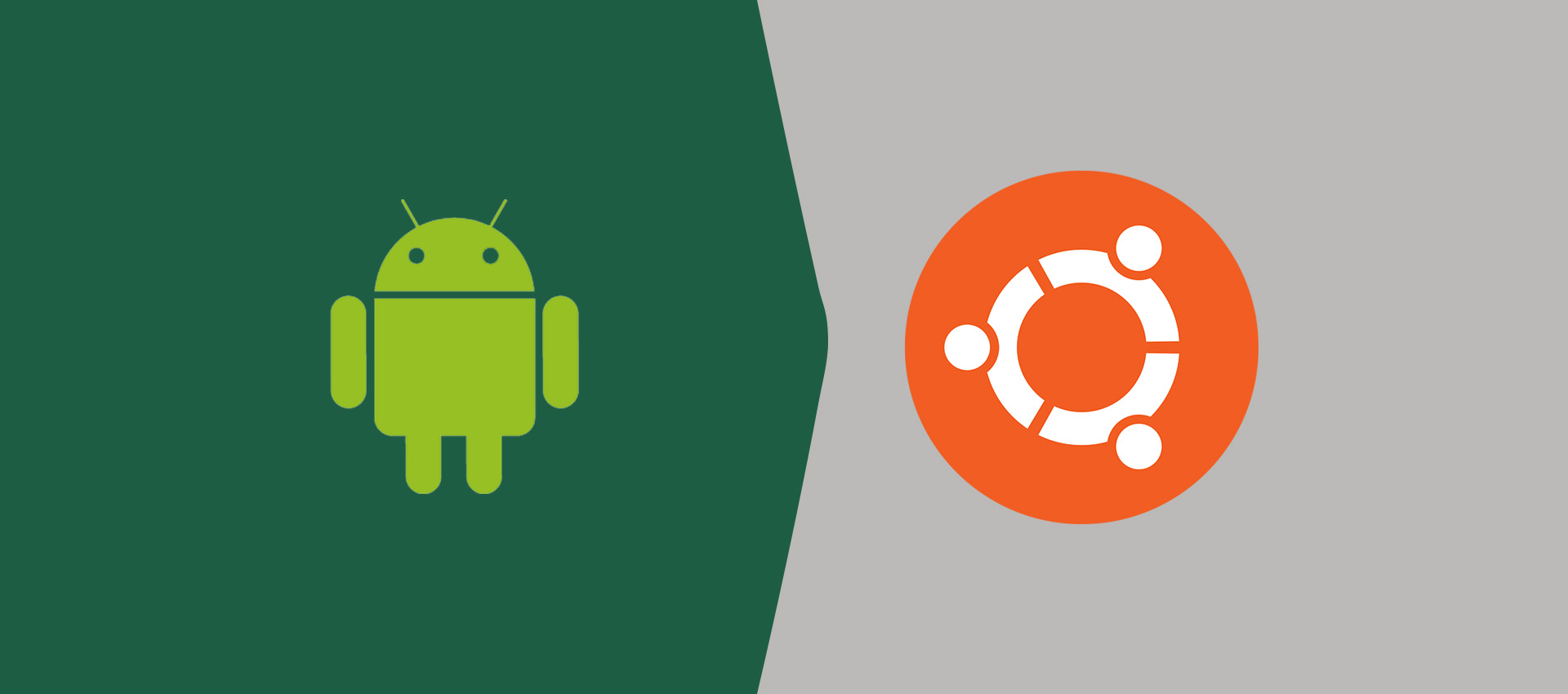

- ANDROID SDK UBUNTU INSTALL
- ANDROID SDK UBUNTU UPDATE
- ANDROID SDK UBUNTU UPGRADE
- ANDROID SDK UBUNTU ANDROID
- ANDROID SDK UBUNTU SOFTWARE
# Android export ANDROID_SDK_ROOT =/Users/ciandroid/android-sdk-macosxĮxport PATH = $PATH: $ANDROID_SDK_ROOT/tools If you're not using bash, edit the right config file for your environment. Now it's time to set your build environment's PATH variable and other variables that will be use to locate Android.Įdit your. $ tools/bin/sdkmanager "platforms android-25" "build-tools 25.0.2" "extras google m2repository" "extras android m2repository"

Run the sdkmanager tool: $ tools/bin/sdkmanager -update

The directory names can be anything you like, but save the files in somewhere easy to find (i.e. Unzip and place the contents within your home directory. Use wget with the correct SDK URL: $ wget Copy the URL for the download that's appropriate for your build machine OS. Go to Android SDK and navigate to the SDK Tools Only section. You will need to download the Android SDK without Android Studio bundled.
ANDROID SDK UBUNTU INSTALL
This will install the Android SDK tools in /usr/local/Cellar/android-sdk/ Installing the Android SDK (Manual Way)
ANDROID SDK UBUNTU UPGRADE
Make sure to upgrade to the latest Gradle version. Gradle 2.2.0 now supports downloading automatically dependencies. Installing the Android SDK (Automated Way) Below is an overview of all different approaches. The Android SDK can be installed automatically using the latest version of Gradle or downloading the Android SDK manually in several different ways. Platform Tools include the Android debug shell, sqlite3 and Systrace. The Build Tools primarily include aapt (Android packaging tool to create. The SDK Tools primarily includes the stock Android emulator, hierarchy viewer, SDK manager, and ProGuard.
ANDROID SDK UBUNTU SOFTWARE
Am getting a lot of help from this forum.The Android software development kit (SDK) includes different components, including SDK Tools, Build Tools, and Platform Tools. I have the same problem, no android entry showing in preferences Thanks for sharing and linking to a solution! Hi Theo! Huh, I am glad you found a solution. How dit it then? Does it work now? “To fix this, please set the environment variable ANDROID_SDK_HOME to a valid path such as “~”.”, is this an error you get, or is a tip for this blog post? To fix this, please set the environment variable ANDROID_SDK_HOME to a valid path such as “~”. However it failed to find the default profile directory. It says “he AVD manager normally uses the user’s profile directory to store AVD files. Probably it was a transitory connectivity problem, in his point or with Google servers, that I hope he has solved yet four months after… X-Dĭude, thanks for this excelent article but I have been in trouble since to start SDK manager. Well, he stands clearly that " it shows error DOWNLOADING packages", so for me it is pretty clear that he is executing the command. Hmm… no android showing in preferences( What could be the problem. Good observation! Thank you, I hope Aario solves his problems. or if you didn’t set path and android-sdk is in your home directory ~/android-sdk/platform-tools/android since its on your path (assuming you followed this tut) just “android” (without quotes ofcourse) is sufficient. “./” part says android executable is in current directory. I’ll leave a message in this comment thread if I found some solution.Īre you sure your command is right. I must mention I installed eclipse with apt-get and it was a really clean Ubuntu Precise installation. I have heard about this issue after I have installed. It tried several times but never made it work downloading necessary packages! :( android command, it shows error downloading packages and no one on the internet got a solution for it. Very simple and clear instructions, thanks Anatoly B-)
ANDROID SDK UBUNTU UPDATE
Updating the SDKĮdit : Now when KitKat is available, I have updated the SDK through the command line: android update sdk –no-ui Comments from A real world example could be wikipedia mobile. Want to have your web apps as native android apps, see the PhoneGap. Just install git and add a new ssh key: sudo apt-get install git Then add this to your path: export PATH=$="1004", MODE="0666", GROUP="plugdev"' > /etc/udev/rules.d/les I prefer to set a point in front of the directory folder to make it be hidden so that my home directoy still looks tidy. Download and unpack the Android SDK, move it to your home folder.


 0 kommentar(er)
0 kommentar(er)
